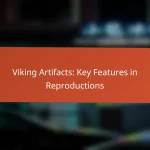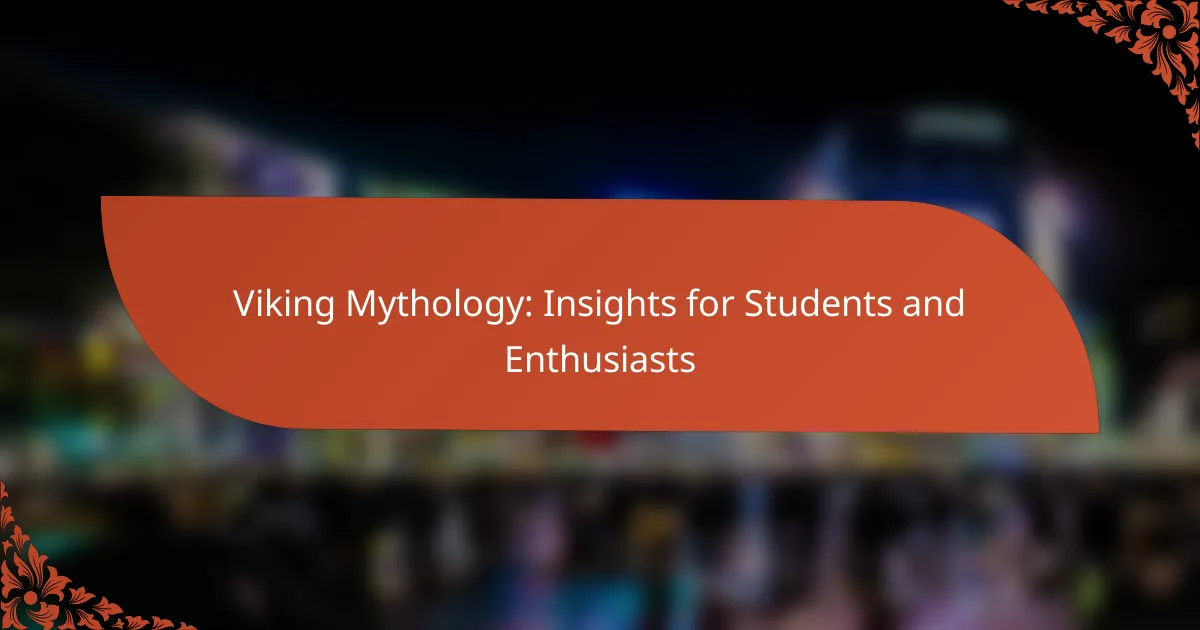Viking mythology has left a profound mark on modern media and entertainment, inspiring a wide array of films, video games, and literature. Its rich narratives and complex characters provide fertile ground for contemporary storytelling, allowing creators to blend ancient lore with modern themes. As a result, audiences are drawn to adaptations that resonate with timeless human experiences, making these myths relevant in today’s cultural landscape.
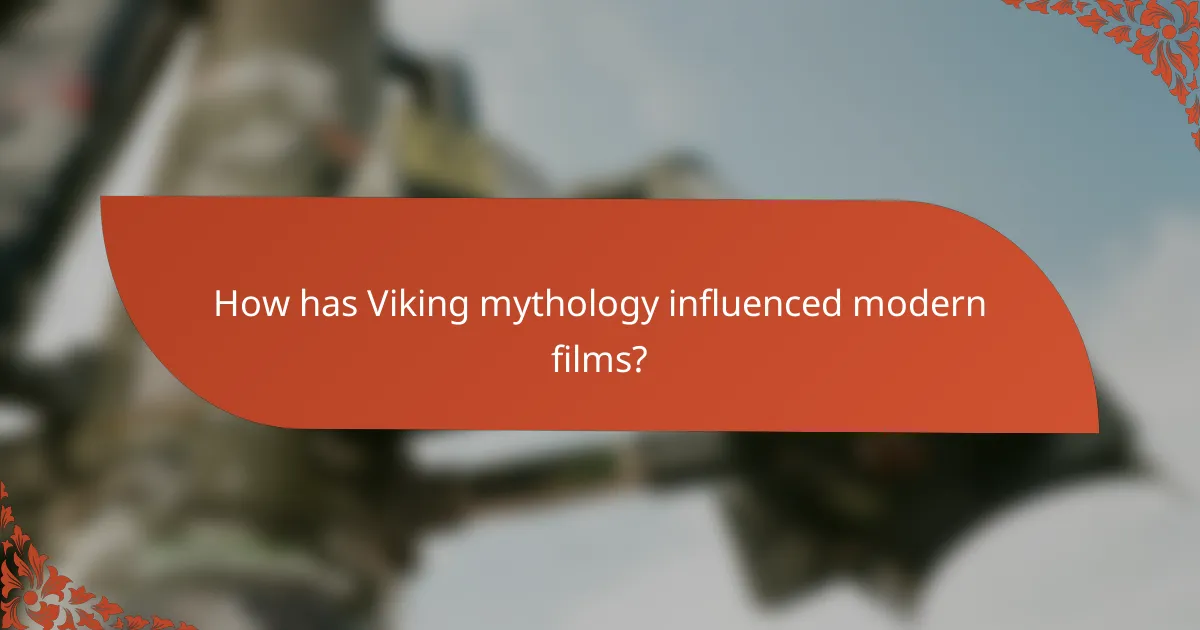
How has Viking mythology influenced modern films?
Viking mythology has significantly influenced modern films by providing rich narratives, complex characters, and visually striking imagery. These elements resonate with audiences, leading to popular adaptations that blend ancient lore with contemporary storytelling techniques.
Thor (Marvel Cinematic Universe)
The character Thor, originating from Norse mythology, has become a central figure in the Marvel Cinematic Universe (MCU). His portrayal combines traditional elements, such as his hammer Mjölnir and his role as a god, with modern superhero themes, making him relatable to contemporary audiences.
Films like “Thor” and “Thor: Ragnarok” incorporate mythological aspects while exploring themes of identity, power, and redemption. This blend of ancient lore with modern storytelling has contributed to the character’s popularity and the overall success of the MCU.
How to Train Your Dragon
The portrayal of dragons, such as Toothless, reflects a blend of mythological creatures and imaginative storytelling. This approach has captivated audiences, making the series a beloved adaptation of Viking-inspired themes for families and children.
Vikings (TV Series)
The “Vikings” TV series offers a dramatized portrayal of Viking life, drawing heavily from historical and mythological sources. It explores the lives of legendary figures like Ragnar Lothbrok and their interactions with gods and fate, providing a gritty, realistic view of the Viking Age.
By incorporating elements of Norse mythology, such as the significance of Odin and the concept of Valhalla, the series enhances its narrative depth. This blend of history and mythology has resonated with viewers, leading to a renewed interest in Viking culture and its stories.

What role does Viking mythology play in video games?
Viking mythology significantly influences video games by providing rich narratives, character archetypes, and immersive worlds. Developers often draw on Norse gods, legends, and themes to create engaging gameplay experiences that resonate with players.
God of War (2018)
In “God of War,” Viking mythology is central to the storyline, which follows Kratos and his son Atreus as they navigate a world filled with Norse gods and creatures. The game’s portrayal of figures like Odin and Thor adds depth to the narrative, blending myth with personal growth and father-son dynamics.
The game incorporates various mythological elements, such as the Yggdrasil tree and the concept of fate, enhancing the player’s experience. Players engage with these themes through combat, exploration, and puzzle-solving, making the mythology feel integral to gameplay.
Assassin’s Creed Valhalla
“Assassin’s Creed Valhalla” immerses players in the Viking Age, allowing them to experience the life of a Norse warrior. The game features historical and mythological references, including quests that involve gods like Freyja and Loki, weaving these elements into the overarching narrative of conquest and exploration.
The inclusion of Viking mythology enriches the gameplay, as players can engage in raids, build settlements, and make choices that reflect their character’s alignment with these mythological themes. This blend of history and myth creates a compelling backdrop that enhances player engagement and storytelling.
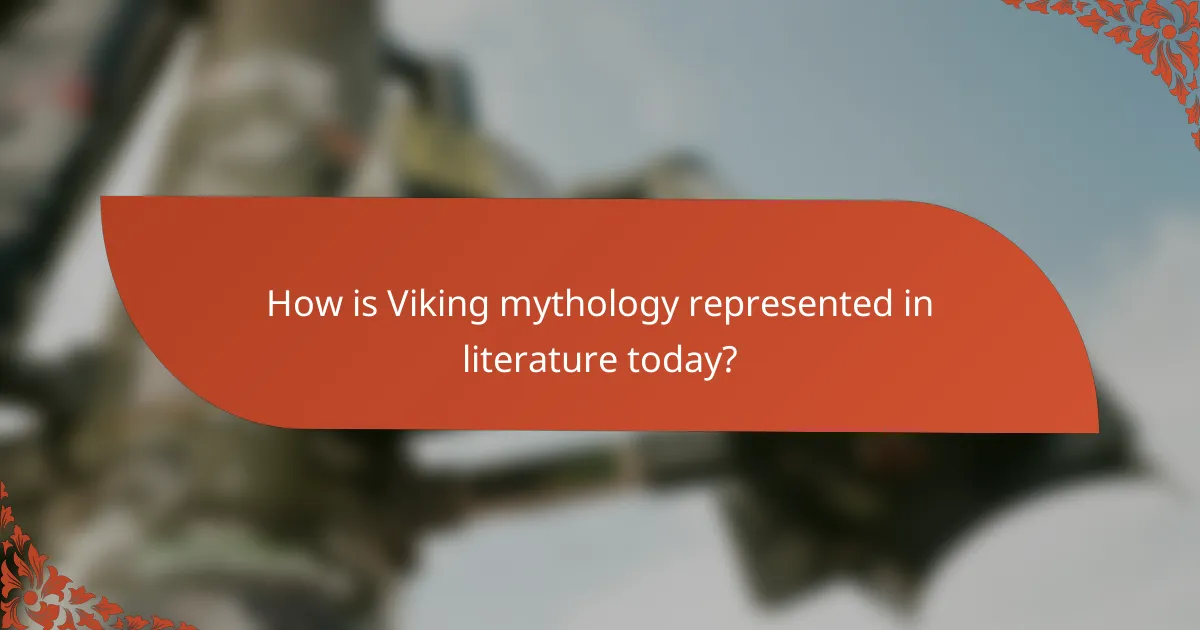
How is Viking mythology represented in literature today?
Viking mythology is prominently represented in contemporary literature, often serving as a rich source of inspiration for themes, characters, and narratives. Authors draw on the myths and legends of Norse gods and heroes, weaving them into modern storytelling to explore timeless human experiences.
The Gospel of Loki by Joanne M. Harris
In “The Gospel of Loki,” Joanne M. Harris reimagines the story of Loki, the trickster god, presenting his perspective on the events leading to Ragnarok. The novel blends humor and dark themes, showcasing Loki’s complex character and his relationships with other gods.
This retelling emphasizes the duality of Loki’s nature, portraying him as both a villain and a misunderstood figure. Harris’s engaging prose invites readers to reconsider traditional narratives and the motivations behind mythological figures.
American Gods by Neil Gaiman
Neil Gaiman’s “American Gods” incorporates elements of Viking mythology through the character of Wednesday, who is a manifestation of the Norse god Odin. The novel explores the clash between old gods and new, reflecting on how mythology adapts in a modern context.
Gaiman skillfully intertwines various mythologies, including Viking lore, to comment on cultural identity and belief systems in contemporary society. The narrative challenges readers to think about the relevance of ancient myths in today’s world.
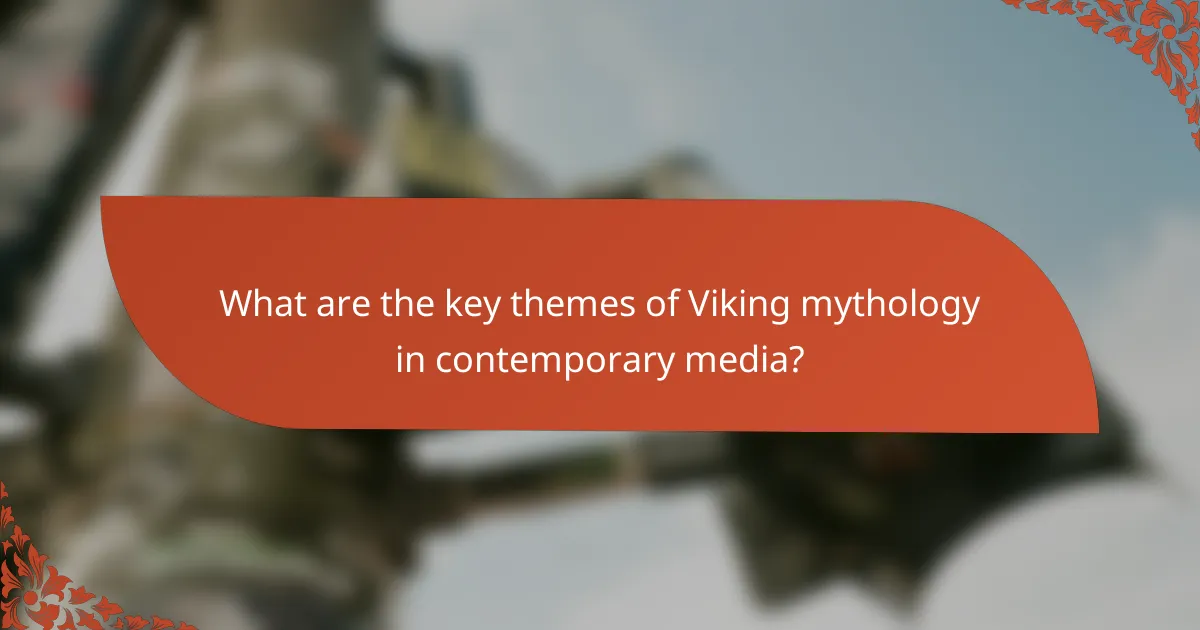
What are the key themes of Viking mythology in contemporary media?
Contemporary media often explores key themes of Viking mythology such as heroism, fate, and the complex relationships between gods and mortals. These themes resonate with audiences, providing a rich backdrop for storytelling across various formats, including films, television shows, and video games.
Heroism and Fate
Heroism in Viking mythology is frequently depicted through characters who face insurmountable odds, often guided by a sense of destiny. Modern adaptations highlight this theme by showcasing protagonists who embark on epic quests, reflecting the Norse belief that fate is intertwined with personal bravery and sacrifice.
In films and series, heroes like Ragnar Lothbrok from “Vikings” exemplify this connection between heroism and fate, illustrating how individual choices can lead to significant consequences. Audiences are drawn to these narratives, as they emphasize the struggle against fate while celebrating courage and resilience.
Gods and Mortals
The interaction between gods and mortals is a central theme in Viking mythology, often showcasing the influence of divine beings on human lives. Contemporary media portrays these relationships as complex, with gods exhibiting both benevolence and capriciousness, reflecting the unpredictable nature of life.
Shows like “American Gods” and “The Witcher” incorporate these dynamics, illustrating how characters navigate their destinies while contending with powerful deities. This theme resonates with viewers, as it mirrors real-life struggles with authority and the search for meaning in a chaotic world.
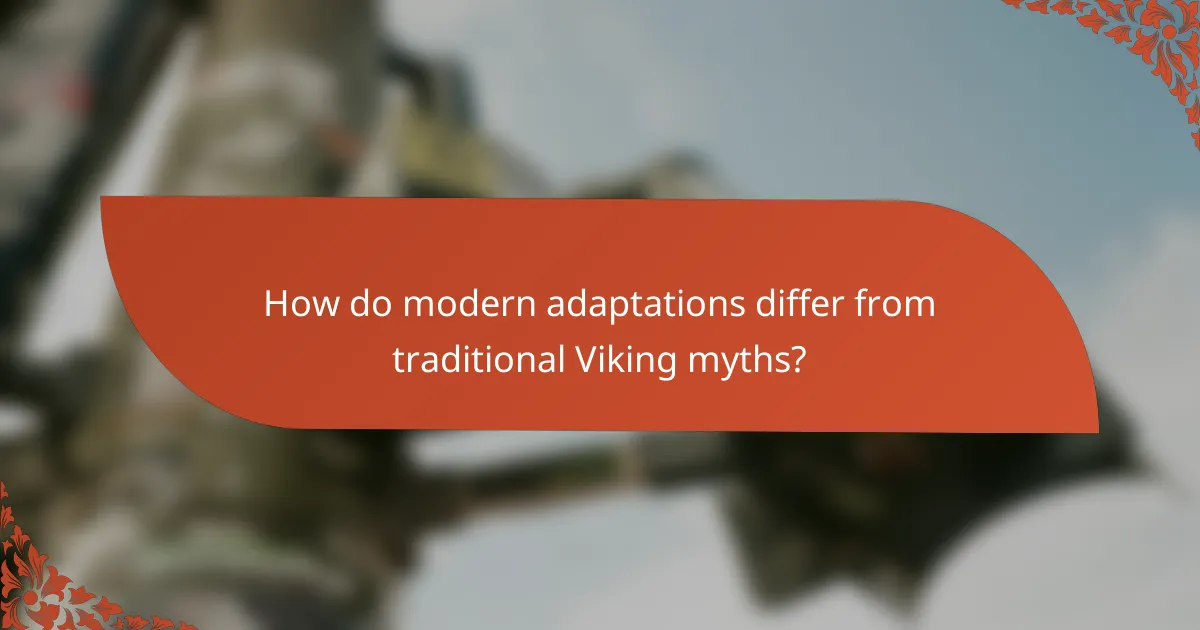
How do modern adaptations differ from traditional Viking myths?
Modern adaptations of Viking myths often prioritize entertainment value over historical accuracy, leading to significant differences in character portrayal and storyline. While traditional myths focus on the cultural and moral lessons of the Norse gods and heroes, contemporary interpretations frequently emphasize action, drama, and personal conflicts.
Character portrayals
In traditional Viking myths, characters are often depicted with a strong sense of duty, honor, and fatalism, reflecting the harsh realities of Norse life. Modern adaptations, however, tend to humanize these figures, giving them more complex emotions and personal struggles. For instance, characters like Thor and Loki are portrayed with modern sensibilities, showcasing vulnerabilities that resonate with today’s audiences.
Additionally, female characters in contemporary adaptations are frequently given more agency and depth compared to their traditional counterparts. Figures such as Freyja and Lagertha are often reimagined as warriors and leaders, challenging the historical limitations placed on women in Viking society.
Storyline alterations
Traditional Viking myths typically follow a linear narrative structure, focusing on quests, battles, and the eventual fate of the characters. Modern adaptations often introduce non-linear storytelling, flashbacks, and multiple perspectives to create a more engaging narrative experience. This shift allows for deeper exploration of themes such as betrayal, loyalty, and redemption.
Moreover, contemporary adaptations frequently incorporate elements from other genres, such as fantasy and science fiction, which can lead to significant deviations from the original myths. For example, the introduction of supernatural elements or modern technology can alter the core messages and themes found in traditional stories, making them more accessible to a wider audience.
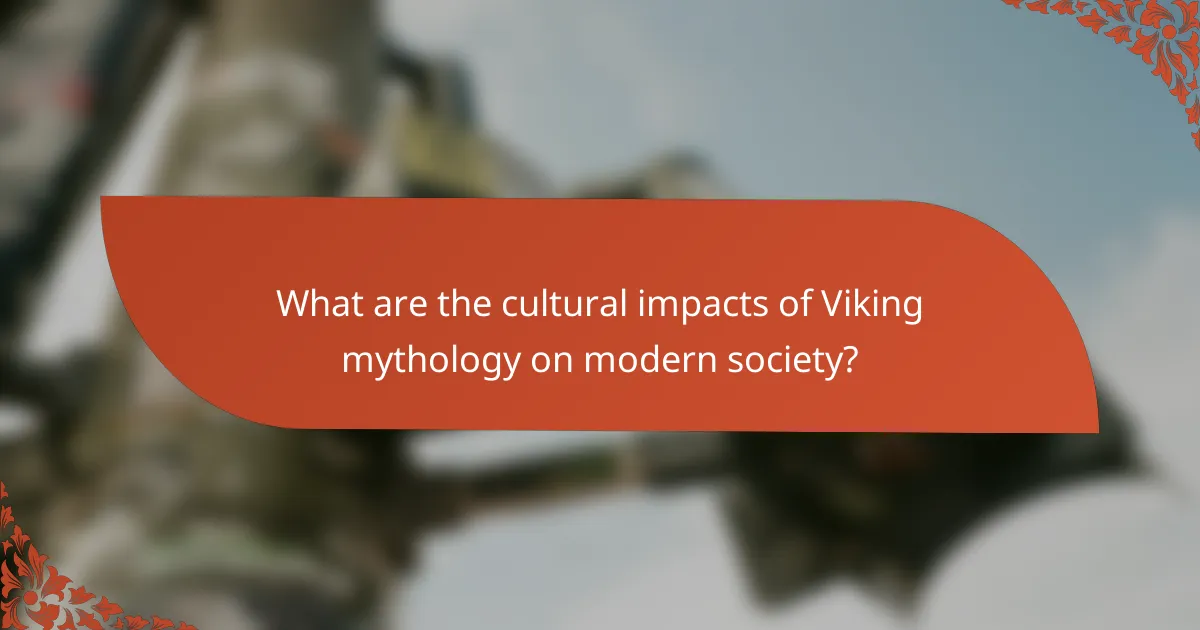
What are the cultural impacts of Viking mythology on modern society?
Viking mythology significantly influences modern society through its themes, characters, and narratives, which resonate in various cultural expressions. This impact is evident in literature, film, and even branding, as the rich lore of the Norse gods and heroes captivates contemporary audiences.
Influence on branding and marketing
Brands often leverage Viking mythology to evoke strength, adventure, and authenticity. Companies in sectors like outdoor gear, beverages, and gaming use Norse imagery and themes to create a powerful brand identity. For instance, brands like Odin’s Beard and Thor’s Hammer appeal to consumers’ desire for ruggedness and heroism.
When implementing Viking themes in marketing, consider the cultural significance and ensure that the imagery aligns with your brand values. Misappropriating these symbols can lead to backlash, so authenticity is key.
Viking festivals and events
Viking festivals celebrate Norse culture and mythology, attracting enthusiasts and tourists alike. Events like the Jorvik Viking Festival in the UK and the Viking Festival in Lofotr, Norway, showcase reenactments, crafts, and traditional food, providing immersive experiences that highlight Viking heritage.
Participating in or organizing such events can foster community engagement and cultural appreciation. Ensure that activities are respectful of the traditions and accurately represent Viking history to avoid cultural misrepresentation.

What emerging trends are shaping the future of Viking mythology in media?
Emerging trends in media are increasingly incorporating Viking mythology, reflecting a growing fascination with Norse culture and its narratives. This trend is evident in various forms of entertainment, including films, television series, and video games, which are reinterpreting ancient stories for modern audiences.
Increased Representation in Television
Television shows are leading the charge in bringing Viking mythology to mainstream audiences. Series like “Vikings” and “The Last Kingdom” have popularized Norse tales, showcasing epic battles and complex characters. This trend is likely to continue, with networks investing in high-quality productions that explore lesser-known myths and legends.
Video Games as Interactive Storytelling
Video games are becoming a significant medium for exploring Viking mythology, allowing players to engage with the stories actively. Titles like “God of War” and “Assassin’s Creed Valhalla” immerse players in Norse mythology, blending historical elements with fantasy. This interactive approach not only entertains but also educates players about Viking lore.
Merchandising and Cross-Platform Expansion
The rise of Viking-themed merchandise reflects the growing popularity of these narratives. From action figures to clothing lines, brands are capitalizing on the interest in Norse mythology. Additionally, cross-platform expansions, such as mobile games and graphic novels, are helping to broaden the reach and appeal of Viking stories, making them accessible to diverse audiences.





